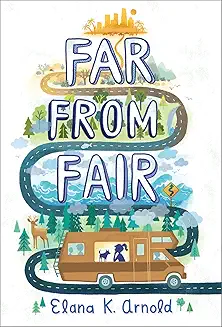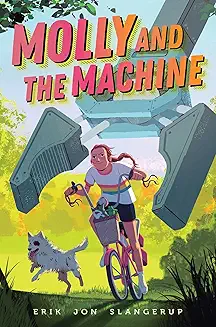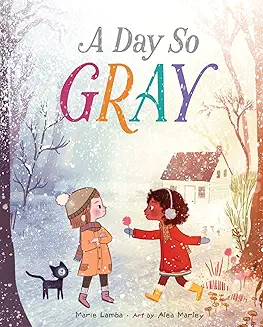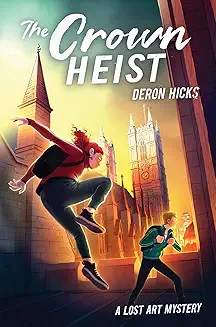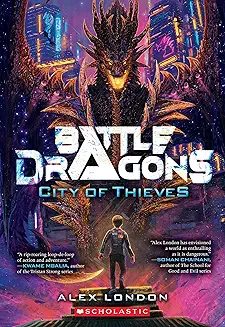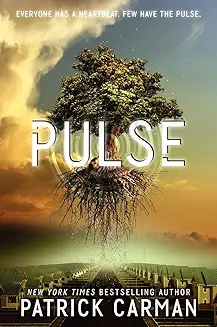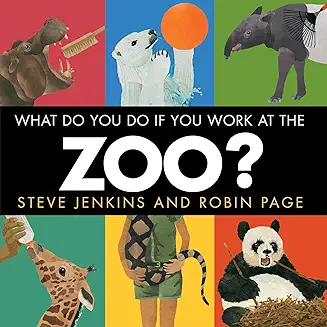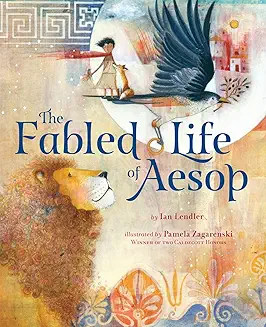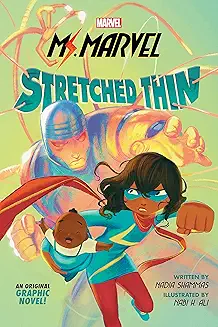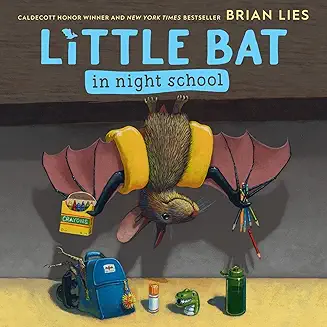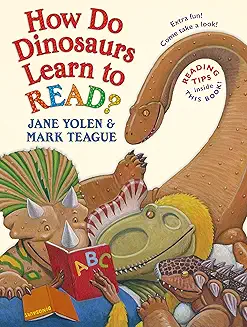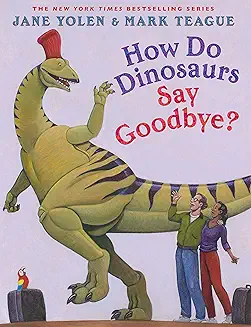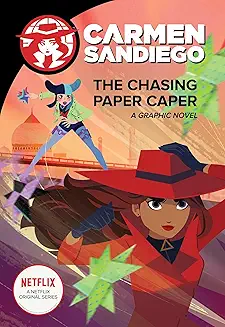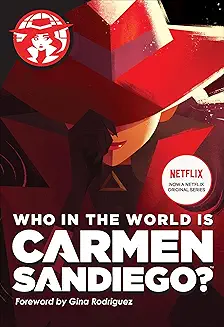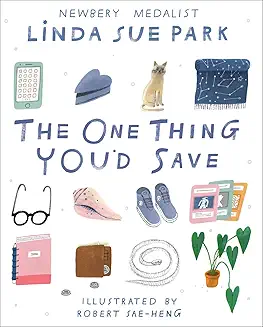Straight Talk for Librarians: Having read and enjoyed some of Ronald L Smith’s previous books, you can tell this is his setting and style of storytelling. Diving into the book, it seems like it will be realistic fiction. The story IS set in what seems like a fictional English seaside town. But right away you get the feeling something is wrong and that evil might be lurking beneath the surface - then the story has elements of magical realism. There is a little bit of dabbling with the occult in this story. I’m not sure that the creature is connected to a mythological creature or if it is made up by the author. Either way, it is a bit scary (in a fun way). I enjoyed the friendship between Rory and Izzy. The mystery part of the story began to be solved when Rory started telling adults about his problems and allowing his friends to help him. The cover art on this book is gorgeous and speaks to the diverse characters without trying too hard. The author always includes diversity in his books in a natural way. Lots of bad creatures die, which resolves the storyline. The author throws in some twists and turns at the end, which makes the end even better and pulls together some treads from the beginning. This is a great pick for a middle school library. I’d recommend it to students looking for stories about witches, mages, scary creatures, mystery, high paced adventure and a fun cast of characters.
Friday, March 29, 2024
Gloom Town, written by Ronald L. Smith, reviewed by Klaudia Janek
Far from Fair, written by Elana K. Arnold, reviewed by Klaudia Janek
Straight Talk for Librarians: I thought the cover of this book was beautiful and really went with the camper life theme. I think most readers would sympathize with Odette. She is having a lot of hardships in life and a lot of changes are coming too quick. This story explored friendships, family dynamics and grief. This book is targeted to ages 9-13 (grades 3-7) and I certainly believe that grief has a place in fiction and it needs to be explored. However, I think the author went too far with diving into Oregon’s Death with Dignity law and sort of compared euthanasia to putting down a pet. It got even more political when Odette’s brother had an exotic animal as a pet (ferret) which is illegal in California, but legal in Oregon. It’s these political state laws, which are complex, that really hinted at ideologies that might not yet be appropriate for the age group targeted. Depending on religious leanings, parents might be completely opposed to the POV presented in this book. I think the intended age group is too young for the level of detail of grandma taking the drug cocktail to die. There is also the possibility that younger readers are not well-schooled in individual state rights and might not fully understand what is going on between California and Oregon. Only one of the professional reviews mentions this and others are ambiguous about the details.
Thursday, March 28, 2024
Molly and the Machine, written by Erik Jon Slangerup, reviewed by Klaudia Janek
Straight Talk for Librarians: This book was so fun to read! It’s hard to know how to classify it. It is realistic fiction, but it can also be considered historical fiction as it is set in the 1980s. It’s also got a bit of a science fiction twist, along with some action and mystery. Molly is the main female character who defies stereotypes as she likes to tinker and fix things. Most of the rest of the characters are boys, so I do think it will appeal to a wide range of readers. This book could be integrated into a STEM program because of all the inventing and tinkering. Those readers who grew up in the 80’s (!) will find lots of nostalgia and remember a time when we were not all connected to our phones at all hours of the day. The setting is southern-ish Ohio, so that local connection is fun. I think the giant robot that acquires a mind of its own is relevant to our AI conversations in society and the implications it might have. If you happen to be in an IB school - the Learner Profile attributes of being a risk-taker and a thinker stand out about Molly. It might also be a good recommendation to math and science teachers so they can push some science-related fiction. It’s a great pick for any middle grade school library and book 2 is already out. If you happen to be a school librarian in Michigan and are going to be at the MASL conference - READ THIS BOOK! So you can be prepared for our Author Breakfast event ;)
Wednesday, March 27, 2024
A Day So Gray, written by Marie Lamba and Alea Marley, reviewed by Klaudia Janek
Straight Talk for Librarians: A sweet cozy read for those cold winter days. If a young reader is sad about the winter, this story will point out all the fun and beautiful things that can be found outside in the winter. Followed by a warm, cozy drink with a fire and a blanket. One of the girls is peach skinned and the other is brown skinned. The shift in viewpoint is fun to watch. The descriptive text will appeal to young readers. When the positive character talks, the font is in blue. The illustrator really captured the beauty of a winter day. Both characters are cute and lovable. It’s just a sweet book that would make for a good read-aloud. It would be perfect for a preK - 2nd grade library collection. For any PYP IB libraries - you can find the attributes of being a thinker and a risk-taker. I definitely recommend this book.
The Crown Heist (The Lost Art Mysteries), written by Deron R. Hicks, reviewed by Klaudia Janek
Tuesday, March 26, 2024
City of Thieves (Battle Dragons #1), written by Alex London, reviewed by Klaudia Janek
Straight Talk for Librarians: This book is pretty fast-paced with lots of adventure at night and the dragon battles. It’s fun to imagine the dragons wooshing around in the night sky. This book is targeted to readers who are between 9-13ish years old. I think it might raise some eyebrows that the author used a non-binary character with they/them pronouns. It seemed a little forced as there is no sexuality within the plot line and the intended audience is a bit young. It has some exciting action adventure, family dynamics, some mystery to work out and school relationships in an urban fantasy dystopian setting. There are not a lot of professional reviews for school librarians to make a purchasing decision with this series. It averages about three stars on various review sites. That is about where I would put it. The cover will grab readers - who doesn’t love dragons? It’s a quick read and might introduce new readers to the urban fantasy genre.
Pulse (Pulse, 1), written by Patrick Carman, reviewed by Klaudia Janek
Straight Talk for Librarians: Even though this book was written in 2013, there is somehow an even more relevant connection to teens being glued to their “tablets” in the story, like they are today. The government monitors what people watch, who they communicate with and they definitely have the ability to track your location. With this being a dystopian story, there are a lot of sad elements like the main characters having lost their parents and the violence of living on the outskirts of society. But I like how there is a focus on friendships and creating a family from the people you surround yourself with. I’m partial to the part of the story where trees are flying through the air because of telekinesis (I mean, who wouldn’t want that power?) I’ll put this on my shelf in the high school library and purchase the other 2 books in the trilogy to recommend to students who are into dystopian books. The author has also written a lot of other books, so it would be a good introduction to his work.
Monday, March 25, 2024
Call and Response: The Story of Black Lives Matter, written by Veronica Chambers, reviewed by Terry Wahrman
Straight Talk for Librarians: Lowery begins by tracing the roots of Black Lives Matter to the deaths of Trayvon Martin, Michael Brown, and Eric Garner, which sparked outrage and galvanized a new generation of activists. He then takes readers on a journey through the movement's growth, from its grassroots beginnings to its global reach, highlighting key moments, leaders, and tactics along the way.
One of the book's strengths is its nuanced exploration of the complexities and controversies surrounding the movement. Lowery does not shy away from addressing internal divisions, critiques from both within and outside the movement, and the challenges of sustaining momentum over time. Through interviews with activists, organizers, and scholars, he offers a multifaceted view of Black Lives Matter, acknowledging its successes, while also, interrogating its limitations and contradictions.
"Call and Response" is not just a historical account; it is a call to action. Lowery challenges readers to confront their own biases, engage in difficult conversations, and take meaningful steps toward racial justice. In a time of heightened awareness of racial inequality, this book serves as a timely and necessary reminder of the ongoing struggle for Black liberation. Great for book discussions, book clubs, and individual readers.
What Do You Do If You Work at the Zoo? written by Steve Jenkins and Robin Page, reviewed by Terry Wahrman
Straight Talk for Librarians: Not recommended. The day starts with taking care of orphaned animals, a joey & a vulture. It is a situation that most young students fear. If you want a book that will bring about discussions, this is the book for you. It allows students to speculate why they are orphaned. The teacher will be inundated with questions throughout the pages on each animals’ situation. The questions can be about Joey's mom? Why is he left alone in a zoo? Who will be his mother? Next turn a few pages to Pandas and their excessive poop, a happy hyena with a bloodsicle, and a bottle fed giraffe whose mother is sick and a manatee whose mother is lost. This all adds up to a disturbing view of the job for the younger reader. I passed the book along to different people in different stages of life and children. The reviews were the same, not recommended.
Friday, March 22, 2024
The Copernicus Legacy: The Golden Vendetta, written by Tony Abbott, MacLeod Andrews, et al., reviewed by Debra Gantz
Straight Talk for Librarians: I was hooked on this book immediately despite having never read the other 2 in this series. Though I am not sure my students will know about Copernicus or Da Vinci and the connections to art and history, I do believe a good adventure with researchable connections will engage those up for this kind of reading challenge. The plot is complex and the moving parts are engaging and thought provoking. This brought me back to my book fair in about 2003 when I sold out of Dan Brown's DaVinci code multiple times in my Scholastic Book Fair as it was THE book everyone was talking about. From the art history to the dangerous adventures and the historical secrets, this book will engage strong readers or families who like to share longer books out loud. This book will certainly satisfy my voracious readers of Erin Hunter, Rick Riordan, and J.K. Rowling. I will add the series to my library and recommend it to all the elementary and middle school librarians in my district!
Power Up (A Power Up Graphic Novel), written by by Sam Nisson and Darnell Johnson, reviewed by Todd Erickson
Straight Talk for Librarians: This a great story with almost two simultaneous stories going on. One IRL and one online in the gaming world. Simon does a good job of keeping the story moving in both reality and virtual gaming world. There are a lot of issues that are brought up, without being preachy or heavy handed. Bullying, screentime, and school-life balance are all addressed. Miles and his diverse group of friends are pretty typical. This book will certainly find an audience as it is entertaining and does a great job of balancing real life with virtual gaming world. There are lessons to be learned from each.
Timo the Adventurer, by Jonathan Garnier and Yohan Sacré, reviewed by Todd Erickson
Straight Talk for Librarians: This story is an engaging adventure that is sure to entertain middle grade readers. The artwork is fantastical, and engaging enough to maintain visual interest. Timo and his world alternates between dark and affirming. There is a good message, it's not all about the journey, but what matters most is the friends you make along the way. Timo conquers his fears and grapples with betrayal and his physical limitations. By the end, it appears he is a grown up adventurer and everything has worked out for the best.
https://www.goodreads.com/author/list/16544502.Jonathan_Garnier
The Fabled Life of Aesop: The extraordinary journey and collected tales of the world's greatest storyteller, written by Ian Lendler and Pamela Zagarenski, reviewed by Terry Wahrman
Straight Talk for Librarians: All the fables are still useful lessons in today’s current life and classroom situations. Students will be transfixed by the lessons they are taught by the talking animals. Teachers could build lessons around each fable and students can have great classroom discussions on each of the fables. Highly recommended.
Thursday, March 21, 2024
Stick and Stone: Best Friends Forever! written by Beth Ferry and Tom Lichtenheld, reviewed by Terry Wahrman
Straight Talk for Librarians: Rhyming was never so much fun. I adore this book and I think your little ones will too. There is just enough searching, just enough fright, and just enough rhyming. It makes a perfect classroom book for early readers. It teaches them friendship and family come in all different shapes and sizes. The illustrations were spot on. On the inside covers, there are different sticks with leaves indicating the many different tree types. Highly recommended.
Ms. Marvel: Stretched Thin, written by Nadia Shammas and Nabi H. Ali, reviewed by Terry Wahrman
Straight Talk for Librarians: Highly recommended. Ms. Marvel is an American muslim girl from a traditional Middle Eastern family. It’s not easy to be a teenager and a superhero. Kamala learns that asking for help is not a sign of weakness. It only makes her and the team stronger and unbeatable. It is a good lesson to be taught. This would make a good classroom read or a stand alone book.
Una Larga Travesía Hasta El Agua: Basada en una historia real (A Long Walk to Water Spanish edition), written by Linda Sue Park, reviewed by Amanda Davies
Straight Talk for Librarians: This translation would be great for Spanish or MLL classroom libraries, as well as in middle or high school libraries. Students who speak Spanish as their first language as well as more sophisticated Spanish language learners could both benefit from this book being on the shelves. Because the English version is so easily accessible, it would also work in earlier Spanish language classes where students compare the two versions side by side.
Wednesday, March 20, 2024
El Dador/The Giver, written by Lois Lowry, reviewed by Amanda Davies
Straight Talk for Librarians: This translation would be great for Spanish or MLL classroom libraries, as well as in school libraries. Students who speak Spanish as their first language as well as more sophisticated Spanish language learners could both benefit from this book being on the shelves. Because the English version is so easily accessible, it would also work in earlier Spanish language classes where students compare the two versions side by side.
Leprechaun's Rainbow, written by Christy Tortland, illustrated by Carlo Beranek, reviewed by Terry Wahrman
Straight Talk for Librarians: Each board book page has a different color and a rhyme to go with it. Children help find the items of each colored page. The rhymes and words felt a little forced, not easily flowing off your tongue. There is a nice little cut out of a rainbow on the top of the book. It’s perfect for little hands to take a hold of it and carry it around. The very appealing illustrations and the design and colors of the book will have kids gravitating to it.
Tuesday, March 19, 2024
Little Bat in Night School, written by Brian Lies, reviewed by Terry Wahrman
Straight Talk for Librarians: Wonderful book for introducing a nocturnal creatures unit and how they differ from other animals. Little bat handles bad situations well and that should be commended and talked about in class. The characters come alive because the Illustrations are close to being realistic without being frightening. Highly recommended. Check out Brian Lies blog here.
Smiley's Dream Book, written by by Jeff Smith, reviewed by Terry Wahrman
Straight Talk for Librarians: Smiley’s dream book is a counting book. It is a stand up for the little guy book. It is about dreaming. There are so many lessons a teacher could create from this book. It is a must have in a classroom library. Highly recommended.
How Do Dinosaurs Learn to Read? written by by Jane Yolen and Mark Teague, reviewed by Terry Wahrman
Straight Talk for Librarians: There are many places to learn to read and how to treat a book. Dinosaurs show us wrong ways and then the right ways. This is a good lesson for early readers on how to treat a book and learning ways to enjoy reading in different surroundings. Teachers should encourage students in finding different locations like on a bean bag, in their bed, on the floor. Each student should have their own perfect reading spot and share it with the class. It is another great way to reward reading by setting aside time to go outside on a blanket, or to find soft seating in school. This oversized book with colorful illustrations is great for a classroom read aloud.
Monday, March 18, 2024
How Do Dinosaurs Say Goodbye? written by by Jane Yolen and Mark Teague, reviewed by Terry Wahrman
Straight Talk for Librarians: There are many ways to learn to say goodbye. Dinosaurs show us the wrong way and then the right ways to show it. This is a good lesson for early readers on how to say goodbye and separating from parents and grandparents. Teachers should use this book as a read aloud to encourage discussion on good ways to handle goodbyes. Possibly follow up with an art project to tell someone how much you love them.
The Chasing Paper Caper (Carmen Sandiego Graphic Novels), written by Clarion Books, reviewed by Terry Wahrman
Straight Talk for Librarians: Definitely a fun way to learn about different cities and cultures around the world. Carmen is in Mumbai, India this time. Interesting facts about the Magna Carta and Mumbai are included in the story and at the end of the book. Paperstars’ talent is making origami. She makes them so accurate and tight that her stars can cut through stone. Great way to introduce origami and japanese art into a classroom. Adventure seekers will love following along. Highly recommended.
Friday, March 15, 2024
El Ratoncito, La Fresa Roja Y Madura Y El Gran Oso Hambriento: Spanish/English The Little Mouse, The Red Ripe Strawberry, and the Big Hungry Bear, written by Audrey Wood and Don Wood, reviewed by Amanda Davies
Straight Talk for Librarians: This is a lovely board book for two important reasons. It could easily be used in an early Spanish classroom so students can use the English translation to help them comprehend the Spanish. It could also be used in a higher level Spanish classroom where students could evaluate the accuracy of the English translation. In addition to its use in a Spanish classroom, it's a great example of a tricky first-person narrator who is unseen in the story but plays and important role in the plot. English and ELA classes could use it as a mentor text for surprising and creative ways to play with the point of view of a children's story.
What Do You Say Little Blue Truck? written by Alice Schertle, reviewed by Terry Wahrman
Straight Talk for Librarians: Learn in rhyming prose how Blue and his friends communicate in visual and audio. This well crafted and written picture board book is battery operated and has many useful purposes in preschool for group read aloud or art projects. The battery has a shut off which will help lengthen the battery life and prevent unwanted interruptions in class.
Jill McImurry the illustrator has her website here.
Thursday, March 14, 2024
The Need for Speed Caper (Carmen Sandiego Graphic Novels), written by Clarion Books, reviewed by Terry Wahrman
Straight Talk for Librarians: Truly a fun way to learn about different cities and cultures around the world. Carmen is in Dubai this time. Her fight is with another woman driver. VILE’s mechanic is also a woman. So if you are looking to broaden the horizons of young females, this might be the way to illuminate the way to different career choices. In the back of the book, there are 2 pages devoted to the United Arab Emirates with fun facts and did you know. This is another great way to learn geography and customs while in school. The graphic novel style and storyline keeps readers turning the page. Highly recommended for adventure seeking students and low level readers.
¿Quien Es Carmen Sandiego? [Who Is Carmen Sandiego?], written by Rebecca Tinker, reviewed by Terry Wahrman
Everyone likes Carmen Sandiego. She’s a hero that thwarts villains, but who is she really? Where does she come from? This is her story.
Beginning as a baby, she was found on the street in a basket and brought to the VILE island raised by the villains and thieves of V.I.L.E., Villains International League of Evil. Her name was Black Sheep. She lived there for years wanting to attend the island school like all the others brought to the island. The school trains them to become the best thieves in the world. At last, she was given the chance to attend, but she failed due to teacher trickery. They would not let her go on missions until she passed all her trials. During her time there, she pocketed a dropped cell phone and connected with her first friend, a boy named Player, in the outside world. He and his friends belong to a group called the White Hats. They each swore to use their hacking skills for good not evil. We all know the path she takes, but was it an easy choice?
Straight Talk for Librarians: I picked up this book for our MLL learners along with a copy of the English version. The MLL students picked up and translated phrases in Spanish to English. Highly recommended for all libraries especially those with Spanish students learning English.
Wednesday, March 13, 2024
Who in the World is Carmen Sandiego? written by Rebecca Tinker, reviewed by Terry Wahrman
Beginning as a baby, she was found on the street in a basket and brought to the VILE island raised by the villains and thieves of V.I.L.E., Villains International League of Evil. Her name was Black Sheep. She lived there for years wanting to attend the island school like all the others brought to the island. The school trains them to become the best thieves in the world. At last, she was given the chance to attend, but she failed due to teacher trickery. They would not let her go on missions until she passed all her trials. During her time there, she pocketed a dropped cell phone and connected with her first friend, a boy named Player, in the outside world. He and his friends belong to a group called the White Hats. They each swore to use their hacking skills for good not evil. We all know the path she takes, but was it an easy choice?
Straight Talk for Librarians: Surprisingly good for a background story. It is as entertaining as one of Carmen’s adventure stories. Everyone is looking for some background on Carmen and Tinker covered her story very well. Carmen's decision to work for good and not evil was a tough one. She had to leave all she knew behind. The book would make a great book club read with questions on morality. Highly recommended for all libraries.
The One Thing You'd Save, written by Linda Sue Park, reviewed by Terry Wahrman
Straight Talk for Librarians: This book makes you evaluate what is important in your life. It would make a great classroom or book club discussion. Loads of pictures and drawings of items on every page make the book approachable for insecure readers. Wonderful teaching tool for students of any age. Written for younger students, but highly recommended for all.
Tuesday, March 12, 2024
Freight Train, written by Donald Crews, reviewed by Terry Wahrman
Straight Talk for Librarians: Freight Train is a sturdy picture book. It's great for learning colors and types of railcars. Pictures tell the story with not many words. It's an easy read that any teacher can come up with off the cuff questions on color and what do you see. Highly recommended.





